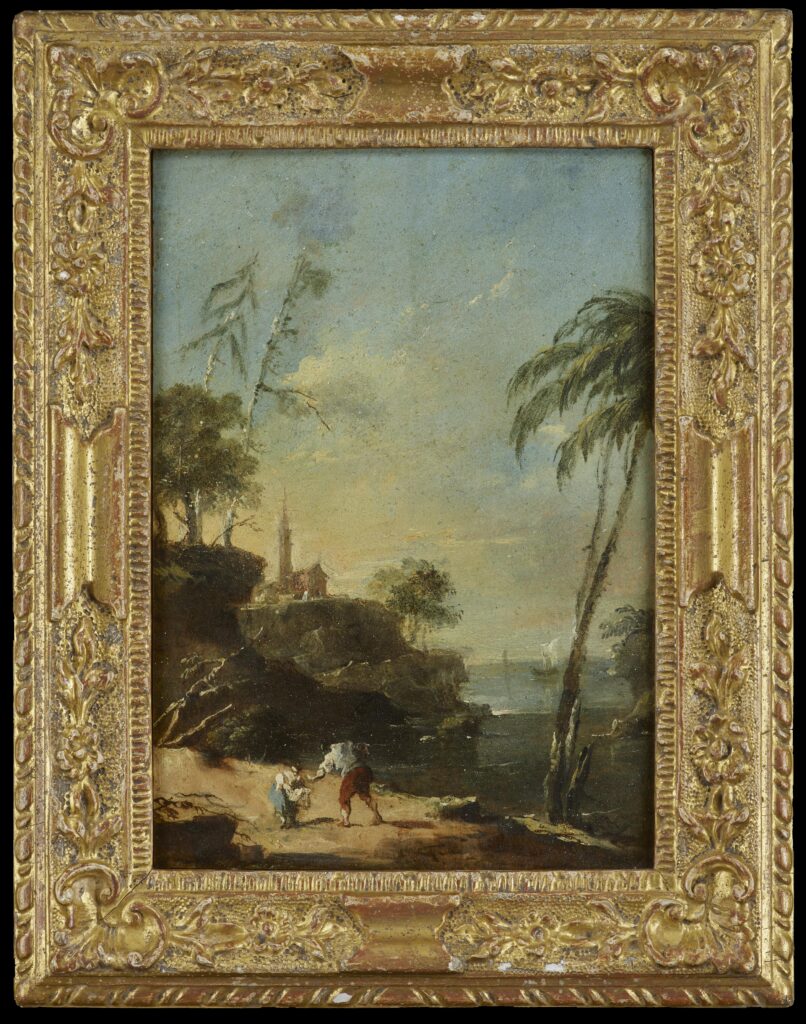Francesco Guardi
1712 – 1793
A Landscape with Palms, a Church and Lagoon

Medium:
Oil on Panel
Category:
Dimensions:
22.5(h) x 15(w) cms
Framed Dimensions:
32(h) x 25(w) cms
Exhibitions:
Essay:
Francesco Guardi can, with all conviction, be called the greatest of the Venetian landscape and Vedute painters of the eighteenth century. He began his career as a pupil of his father, Gian Domenico, as did his elder brother Gian-Antonio Guardi. By 1735 though he had moved to the studio of Michele Marieschi and remained there until 1743. Cecilia, the artist’s sister married Gian Battista Tiepolo and was to become the mother of Gian Domenico Tiepolo. They proved to be a truly artistic family. It has been suggested that his father had been a pupil of Sebastiano Ricci, an artist who would also exert a strong influence on the young Francesco.
Guardi's great contribution to Italian landscape painting was his uniquely volatile approach to drawing with a wonderful 'wet' application of paint to the surface of both canvas and panel. He delighted in capturing the dazzling Venetian light and the way it plays on the ever-present water.
His topographical compositions are carefully constructed and often depict figure groups. His capriccio views are delightful and bright with verve and drama, almost the complete antithesis of the carefully composed works of his contemporary, Canaletto.
-
This composition relates extremely closely to another larger work by Guardi (see A. Morassi, Guardi. Antonio e Francesco Guardi, Venice, 1973, cat. no. 896, fig. 806). This work was sold as one of a pair of capricci in 2004 (Sotheby's, London, 7 July 2004, lot 56). Here we see the same church with tower in the distance, a lagoon, sailboat and palm tree. This last element is rather unusual in Guardi's oeuvre and injects a hint of the exotic. The main differing feature, other than the fact that the Sotheby's picture is painted on canvas instead of panel, is the figures. In the canvas picture we see a rider and horse while in the present painting there is a peasant leaning to help a girl who appears to be holding a basket of a bundle of cloth.
Morassi describes the canvas version as having come from Guardi's 'middle period' in around the 1760s. Our picture might be dated later to when Guardi produced small upright capriccio paintings on panel in the 1770s and 1780s which were popular among Grand Tourists.
Provenance:
With Colnaghi in 1998.
Private collection, Italy.
